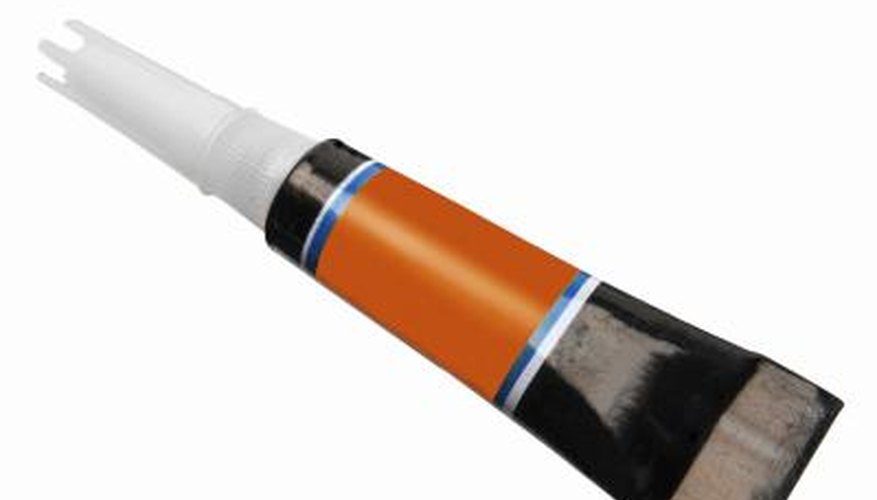Older speakers employing foam surrounds do, on occasion, require replacement of that surround, due to dry rot or abuse. Blown speakers with the cone detached from the ridged "spider" suspension beneath also require repair. In both cases, the same type of glue is required. Speakers are always in motion while operating, so certain parameters of glue or adhesive should be considered when deciding which to use.
Flexibility
The glue chosen for the repair must remain flexible to not cause damage while the repaired speaker is in motion. This rules out most types of "super" style glues, which dry brittle and inflexible. The proper type of cement is normally "goopy" upon removal from the container, giving an indication of how it cures. Ideally, the adhesive should dry as flexible as the cone, surround, or spider it adheres to.
- The glue chosen for the repair must remain flexible to not cause damage while the repaired speaker is in motion.
- The proper type of cement is normally "goopy" upon removal from the container, giving an indication of how it cures.
Curing Time
Adhesives designed for speaker repair cure anywhere from a few seconds to an hour or more. Depending on your level of skill and confidence, you may choose one that allows a small degree of repositioning of the new surround, dustcap, or cone. Skilled repairers may choose to use a glue that sets up and cures almost instantly. This is especially useful if a series of speakers require repair.
- Adhesives designed for speaker repair cure anywhere from a few seconds to an hour or more.
- Skilled repairers may choose to use a glue that sets up and cures almost instantly.
Application Specific
Not all glues are designed for all speakers. Many adhesives are ideal for binding porous foam and paper, but not rubber or metal. Regardless of the type of glue chosen, you must pay attention to this key factor. An adhesive designed for mating a set of materials may prove utterly unacceptable for another. Glues designed for molecular bonding are necessary for non-porous, man-made materials. Mechanical binding is needed for porous. Read the manufacturer's recommendations prior to selection.
- Not all glues are designed for all speakers.
- Many adhesives are ideal for binding porous foam and paper, but not rubber or metal.
Accelerants
Accelerants are normally sprayed on the adhesive after application, speeding the time required for curing. Some two-part adhesives require the use of this spray, which dries almost instantly upon contact with the surrounding speaker materials. Accelerants are not, in themselves, adhesives; they only promote the curing process of certain types of cyanoacrylics and other heavy-duty glues.
